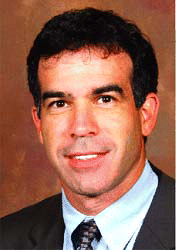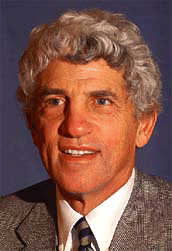Physicians can successfully perform ultrasound-guided (US) fine-needle aspiration biopsy (FNAB) of thyroid nodules in the office instead of referring patients to a hospital-based radiologist for the procedure, according to new data presented at the annual meeting of the American Academy of Otolaryngology-Head and Neck Surgery. It’s not all about the palate, according to Michael Freidman, MD, Professor of Otolaryngology at Rush University Medical Center in Chicago, who is known for developing the Friedman Tongue Position classification system.
Explore This Issue
February 2008We were able to get adequate biopsy results 93% of the time without the patient having to go to a hospital-based institution, said the study’s lead author, David L. Steward, MD, Director of the Thyroid and Parathyroid Program and Associate Professor in the Department of Otolaryngology/Head and Neck Surgery at the University of Cincinnati.
Having an otolaryngologist-head and neck surgeon perform FNAB in the office saves the patient time, explained Dr. Steward. Traditionally, office-based physicians refer patients to a hospital to see a radiologist for FNAB. Another advantage of performing office-based ultrasound (US) and ultrasound-guided fine-needle aspiration (US-FNAB) is that the performing physician is familiar with the patient’s history and symptoms, he said.
Head and neck surgeons are increasingly acquiring US as part of comprehensive diagnosis and management of their patients, noted David J. Terris, MD, Porubsky Professor and Surgical Director of the Medical College of Georgia Thyroid Center in Augusta. A natural extension of this is to use the technology to perform fine-needle aspiration biopsies, he said.
The Data
Dr. Steward and his colleagues evaluated data from a prospective cohort study of 447 consecutive office-based US-FNAB procedures conducted in his practice between 2003 and 2006. On-site cytopathologic evaluation of the specimen adequacy was not available.
Three to four needle passes under real-time US on target nodules were used. The first pass consisted of capillary sampling, and specimens were placed on glass. Other passes used aspiration, and specimens were placed in a methanol-based, buffered transport solution.
An adequate specimen was defined as having five to six clusters of thyroid follicular cells. If the specimen contained no follicular cells, the researchers considered it nondiagnositic. If it contained insufficient follicular cells, it was suboptimal.
Overall, researchers were able to obtain adequate specimens in 92.6% of the 447 cases. Nondiagnostic specimens occurred in 3.6% of the 447 cases, and suboptimal specimens occurred in 3.8%.
Cytologists found that 4.5% of specimens were malignant. Atypical or suspicious features were found in 8.3% of specimens. A benign cytological diagnosis was made in 79.9% of 447 specimens, of which 1.1% were false-negative.
The Procedure
In the office-based setting, the need for the procedure generally arises when a patient comes in for a consultation with a surgeon, said Dr. Steward. The physician performs an initial diagnostic US and a US-guided FNAB using local anesthetic, and then sends specimens to a cytopathology lab, he said.
Robert A. Sofferman, MD, Professor of Otolaryngology at the University of Vermont in Burlington, noted that with some larger thyroid nodules, specimens can be obtained without using US. However, US-guided FNA is preferable, as it allows biopsy of specific areas that may have suspicious features within the nodule, he added.
In addition, a cytopathologist may be available on-site in some office-based settings, which helps to simplify the process of obtaining a workup, said Dr. Sofferman.
In Dr. Steward’s practice, results are back from the lab within a week and are then explained to patients at a follow-up visit. I avoid giving biopsy results over the phone, he said. He discusses patients whether their biopsy is benign, suspicious, malignant, or nondiagnostic.
How results are interpreted will vary from office to office, noted Dr. Terris. There’s a relatively wide variability in the skill set of cytopathologists, he explained. It’s also worth noting that the yield of biopsy probably depends to some extent on the skill set of the physician obtaining the aspirate.
Who will perform these procedures in the office setting can depend on referral patterns and circumstances of the medical practice, added Dr. Terris. He performs few US-guided FNABs because an endocrinologist in the same practice likes doing them and has the skills and background to acquire superb results.
Repeat Biopsies
Patients who receive nondiagnostic or inadequate results usually undergo a repeat US-guided FNAB at a follow-up visit, said Dr. Steward. Generally, physicians obtain an adequate sample in about half these individuals. Some cystic nodules are notoriously difficult for obtaining and adequate sample, he said.
Patients with a persistent thyroid nodule that is nondiagnostic on two separate occasions are offered a third attempt at biopsy in-office or through a hospital or are offered surgery, said Dr. Steward.
If a specimen is inadequate for a diagnosis, Dr. Sofferman accrues three or four patients and has them come into the office when an on-site cytopathologist is available. We sample them one at a time and have the cytopathologist look at the specimens right there to determine if the sample is adequate, he said. If samples still aren’t adequate, the patient may need to be referred for surgery, he explained.
Surveillance of the thyroid nodule is also an option, noted Dr. Terris.
Coding Information
Another important component of performing US-FNAB is knowing what CPT codes to use, said Dr. Steward. A code exists for diagnostic US (76536), whereas a separate code (10022) is used for US-guided FNAB, he said.
Another code (76942) exists for using US to place the needle within the thyroid nodule, he added. The US-guided FNAB code and the needle placement code must be used for each nodule biopsied, not just for each patient, he explained.
What Patients Should Know
Overall, patients should know that US-guided FNAB is a safe procedure with very little risk, said Dr. Sofferman. With that said, they should be off blood thinners about five days before FNAB to limit the potential for hematoma, he added.
Fine-needle aspiration is not a very invasive procedure, said Dr. Terris. But there is always a chance of bleeding or infection, and blood may collect following the procedure. Dr. Terris also advises that patients don’t eat anything for a few hours beforehand.
When Referral May Be Necessary
Patients will need to be referred to radiologist if the office-based physician is not skilled or doesn’t have the necessary US equipment, said Dr. Sofferman.
Additionally, some lesions are difficult to sample, said Dr. Sofferman. For example, the neck may be scarred or the nodule may be resting on the carotid artery. Under these circumstances, the otolaryngologist who is not confident in US-FNAB may want to refer the patient to a radiologist or colleague with more experience, he said.
Required Skills and Experience
To perform US-FNAB well, the physician needs to have a certain skill set and qualifications, said Dr. Sofferman. You can’t buy and ultrasound machine and train yourself, he said.
The American College of Surgeons (www.facs.org ) offers a training and credentialing course on thyroid and parathyroid US, which includes biopsy instruction, at its annual congress, noted Dr. Sofferman, who chairs the training program.
The American Association of Clinical Endocrinologists (www.aace.com ) also offers a two-day accreditation course on thyroid US and FNAB.
Once physicians take a credentialing or accreditation course, they need to perform a number of cases under preceptorship, said Dr. Sofferman. How many US-guided FNABs need to be completed under this monitoring depends on the hospital requirements for credentialing of new procedures, he explained.
The bottom line is that people who are skilled in ultrasound-and this would usually be someone who does thyroid work and thyroid surgery-can perform US-guided FNA with high degree of efficiency at the office, said Dr. Sofferman. It doesn’t necessitate a separate trip to the radiologist.
©2008 The Triological Society


Leave a Reply